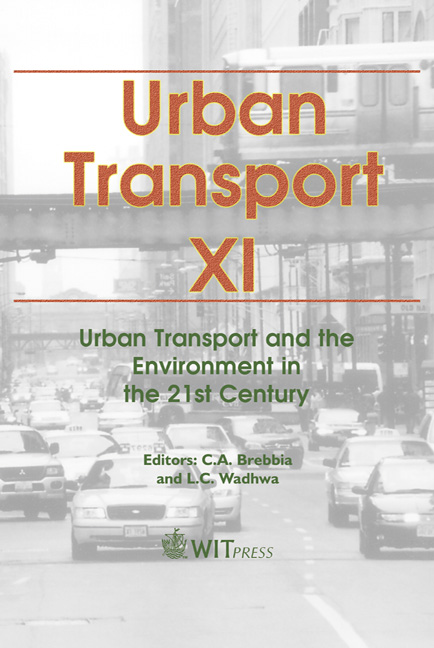New Insights About The Relation Between Modal Split And Urban Density: The Lisbon Metropolitan Area Case Study Revisited
Price
Free (open access)
Transaction
Volume
77
Pages
10
Published
2005
Size
478 kb
Paper DOI
10.2495/UT050401
Copyright
WIT Press
Author(s)
J. de Abreu e Silva & F. Nunes da Silva
Abstract
Urban density is usually considered as one important factor of modal split, although its weight, compared with other variables (like car ownership, income, public transport supply, etc), is not consensual. In a previous paper the impact of urban density in modal split (defined as car share in the total number of trips made by the population of a specific urban area) in the Lisbon Metropolitan Area (LMA) was analyzed. The main conclusion was that urban density was not the most important explicative variable. From these conclusions several questions have emerged, which the present paper addresses, such as: • What is the importance of urban density in the modal split of trips made by the residents of each zone? • What is the importance of urban density in the modal split of trips to and from the centre of the LMA? • What is the importance of urban density in the number of car kilometers traveled per capita? • What is the importance of urban density in the modal split in terms of car kilometers traveled? The developed approach uses multivariate regression analysis, considering as independent variables urban density, car availability, income and accessibility indicators. The obtained results are compared and discussed, in order to identify which aspects are conditioning—favouring, or not—the weight of density in modal split. Keywords: transport and land use, urban density, modal split, metropolitan areas.
Keywords
transport and land use, urban density, modal split, metropolitan areas.





